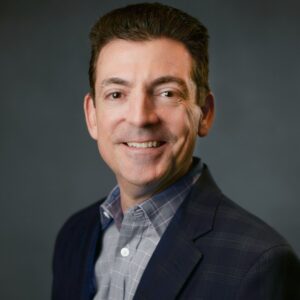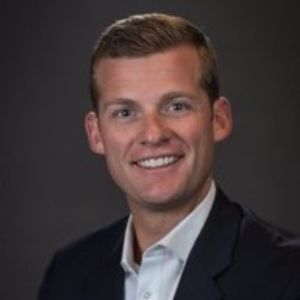NIC on Financing
| The seniors housing and care industry continues to show signs of stability and recovery, particularly for independent living, assisted living, and CCRCs. But that trend doesn't necessarily hold true for the skilled nursing sector. Every quarter since 1999, the nation's leading senior living lenders, owners/operators, and appraisal professionals have reported their key financial and performance data to the National Investment Center for the Seniors Housing & Care Industry (NIC). The information is then posted as the NIC Key Financial IndicatorsÖ on www.NIC.org and accessed free of charge. For the third quarter of 2005, these indicators showed that loan volume rose to more than $1.2 billion-the highest amount ever tracked by NIC. At the same time, the percentage of performing loans also ticked up to 98.75%-again, the highest ever reported to NIC. That percentage is noteworthy, because it puts seniors housing on the same footing as the long-established office, industrial, retail, and multifamily asset classes. Problems Remain for Skilled Nursing But the skilled nursing sector showed a decline-continuing a slow, but perceptible change that has been taking place year after year. The median occupancy rate for freestanding skilled nursing went down from 87% in the second quarter of 2005 to 86% in the third quarter. For skilled nursing within CCRCs, the median occupancy declined from 86.5 to 84%. A similar pattern can be found within the nation's top markets, although overall occupancies are higher. The NIC Market Area ProfilesÖ (NIC MAP), a quarterly service that tracks properties specifically in the 30 largest cities or metro areas, show that the median occupancy rate averages 96% for independent living, 95% for assisted living, and 96% for dementia care. But once again, skilled nursing care is the lowest, averaging 93%. New Solutions for Low Occupancies Fortunately, some operators are starting to see this problem as a real opportunity, and they are coming up with innovative models and product mixes to differentiate themselves in the marketplace. Randy Bufford, CEO of Trilogy Health Services, LLC, recently shared his company's experience with industry executives on an NIC Executive Circle conference call. The founders of Trilogy-which has properties in Indiana, Ohio, and Kentucky-have been in the skilled nursing business for 25 years. "Over that period, there has not been a significant nationwide repositioning, redevelopment, or new construction in the skilled nursing sector," said Bufford. "Some of the 30- and 40-year-old facilities were built with three- and four-bed wards, and those just are not marketable today. In fact, you'd even have difficulty in some markets selling semiprivate accommodations in skilled nursing. So unless there's a significant capital commitment to some of these older properties or a repositioning of them, I think we might see a further decline in occupancy or more beds being taken out of service." To answer this need, the company has rolled out its Trilogy Health campus, a model best described as a small-market, nontraditional CCRC, with a continuum consisting of adult day health, assisted living, and skilled nursing. The company's prototype facility is approximately 48,000 square feet and features two separate but attached operations. On one side of the campus, there is a 68-bed skilled nursing facility, and on the other, a 35-apartment assisted living facility. They share common administrative and support space. "The operations truly are separate," explained Bufford. "They have their own parking, entrances, dining room, and common-space areas. The kitchen and service areas are located between the two parts of the campus and provide hot food directly for both the assisted living and skilled nursing dining rooms. "In most markets, the assisted living operation is broken down into 23 traditional assisted living units and a separate, 12-apartment, secure dementia wing that has its own complement of secure dining, living, and activity areas," Bufford continues. "Five of the assisted living apartments are set up for double occupancy, so we have a capacity of 40 on the assisted living side of the campus. The skilled nursing portion features a predominance of semiprivate rooms, but each has its own shower and bathroom. Market selection drives the number of private rooms, which varies from as few as four to as many as 32 in very upscale communities. Rehab services are provided from a therapy room located in the administrative section of the campus. It's set up to do both inpatient and outpatient services, so we can provide outpatient services to our assisted living resident population." Recently, in two markets, Trilogy has established independent living patio homes surrounding the campus to give them a broader continuum. Based on their early success, Trilogy anticipates expanding that concept to additional markets. "One nice surprise we didn't anticipate is that we have a good deal of resident transition that moves down the continuum towards assisted living," continued Bufford. "This would be somebody who maybe had a hip fracture, went to the hospital, and then came to our healthcare center for a rehabilitative stay. At that point, we start cross-selling and suggest that prior to moving back home, he or she consider staying a month in one of our apartments. Or perhaps the family has come in from out of town and decided that mom shouldn't be living at home. So we see a tremendous amount of self-referral from our skilled nursing to our assisted living apartments, and that's worked very well for the model from an operational, as well as a financial, perspective. Bufford said Trilogy is also using adult day health as an educational "lead-in" to assisted living. "We can use the respite of the adult day health to have prospective residents get to know our people," he said. "Although it's not a meaningful revenue source for us, it's a very meaningful community outreach, and a marketing lead-in to our continuum, particularly in markets where we're the only assisted living provider in town." Other Models "Our portfolio is not necessarily representative of the broader market, since we don't have any freestanding skilled nursing," cautioned Tiffany L. Tomasso, chief operating officer for Sunrise Senior Living. "They're all on campuses, very high-end. But the focus that we've taken over the last two years is to reposition the assets that came through our Marriott acquisition to leverage their marketability, given the changing dynamics in the marketplace for more private pay, fewer number of beds, higher Medicare, shorter length of stay, and the amenities and services that consumers want today." Phil Downey, senior vice-president of strategy and research for Sunrise, said, "We also recognize that people still prefer to stay in their apartments and use the home-care option as much as possible, whether it's in their freestanding home or their current apartment or condominium." To do this, Sunrise is developing two equity-ownership models. One is a "condo full-service model" and the other is called a "condo-for-life model." The condo full-service model will offer independent living with "very residential," on-site assisted living and dementia care and, in some cases, skilled nursing. The total size will generally be between 180 and 320 units. The units themselves will be larger than those typically found in the marketplace, with independent units averaging 1,300 to 1,500 square feet and featuring premium finishes throughout. In addition, the community will have lots of amenities, including multiple dining venues. "We're really trying to offer lots of choice, lots of options, which are not programmatically seen in the typical independent living supply that's out there today," said Tomasso. Health spa and senior fitness centers are being planned, so the whole wellness approach will be a greater component of the lifestyle option. "In this condo full-service model, the residential condominiums will be owned by the resident, while the services condominium-which would encompass assisted living, Alzheimer's care, and skilled nursing-would be owned by an investor or Sunrise," explained Tomasso. The other Sunrise model under development, the condo-for-life model, will be a combination of seniors condos with facilitated home-care services. Although there will not be on-site dedicated neighborhoods or spaces for assisted living, Alzheimer's care, or skilled nursing, those services will be delivered to the resident's apartment through home care. The typical community size for this model will be 80 to 140 units, with communities heavily focused in the top 30 metro markets. "We envision a restaurant, cocktail lounge, living room, and spa, but generally fewer and smaller common spaces," said Tomasso. "There will again be the commitment to wellness services and, obviously, we'll be facilitating the home-care services." In both of the Sunrise models, the target customer is functional, health-wise, and between 70 to 79 years of age. "Still, this is not a need-driven decision," said Tomasso. "In fact, it's probably much more a lifestyle decision, but one that anticipates those needs down the road." The Future of Skilled Nursing Anthony J. Mullen is Research Director, National Investment Center for the Seniors Housing & Care Industry (NIC). To hear a recorded version of the NIC Executive Circle call, which also features more discussion on these new models, visit "Executive Circle" at www.NIC.org or call (410) 267-0504. Founded in 1991, NIC, a nonprofit organization, uses proceeds from its annual conference-scheduled next for Sept. 27-29, 2006, in Chicago-to fund original research, particularly that dealing with business strategy and capital formation for the senior living industry. To send your comments to the author and editors, please e-mail mullen0306@nursinghomesmagazine.com. |
I Advance Senior Care is the industry-leading source for practical, in-depth, business-building, and resident care information for owners, executives, administrators, and directors of nursing at assisted living communities, skilled nursing facilities, post-acute facilities, and continuing care retirement communities. The I Advance Senior Care editorial team and industry experts provide market analysis, strategic direction, policy commentary, clinical best-practices, business management, and technology breakthroughs.
I Advance Senior Care is part of the Institute for the Advancement of Senior Care and published by Plain-English Health Care.
Related Articles
Topics: Articles , Finance











